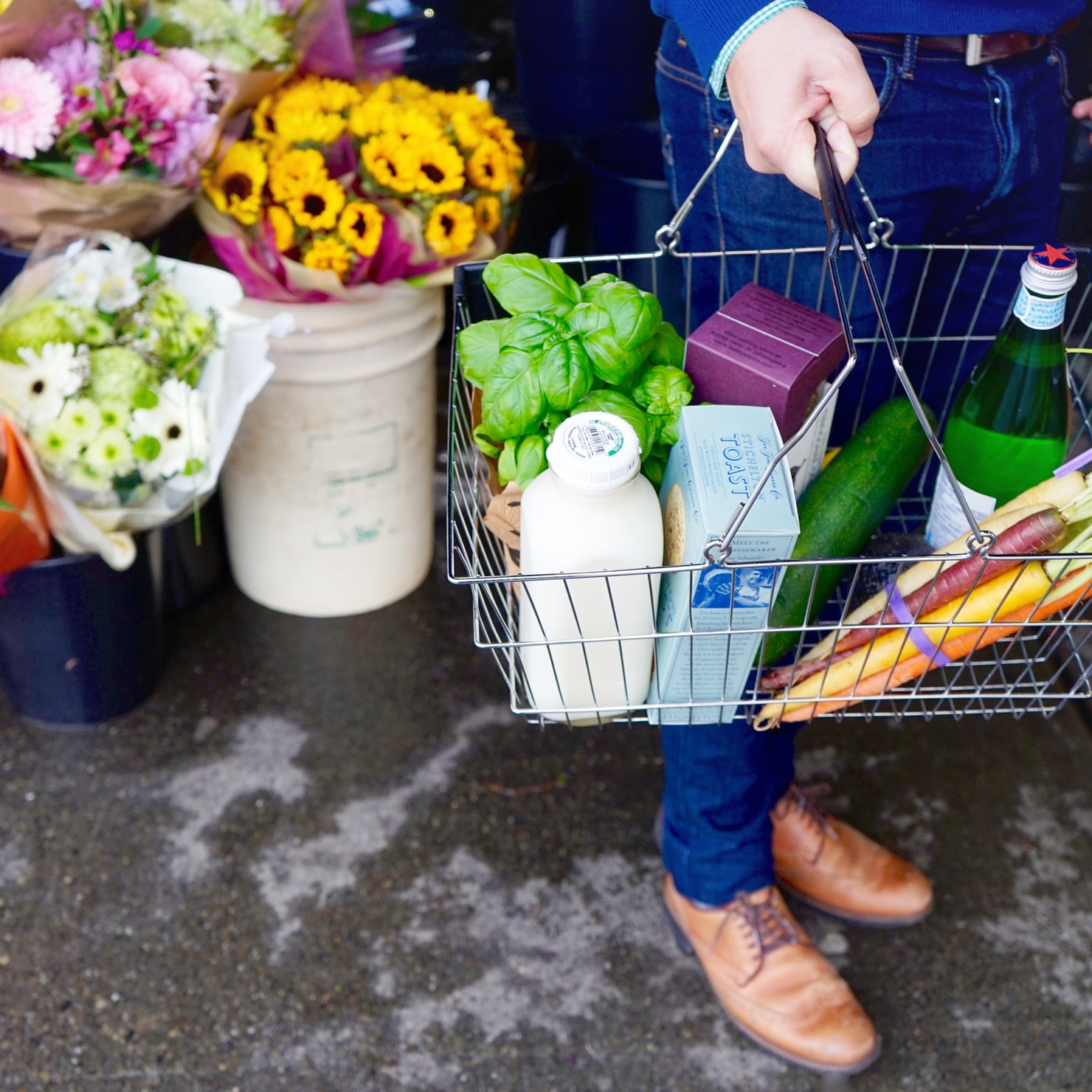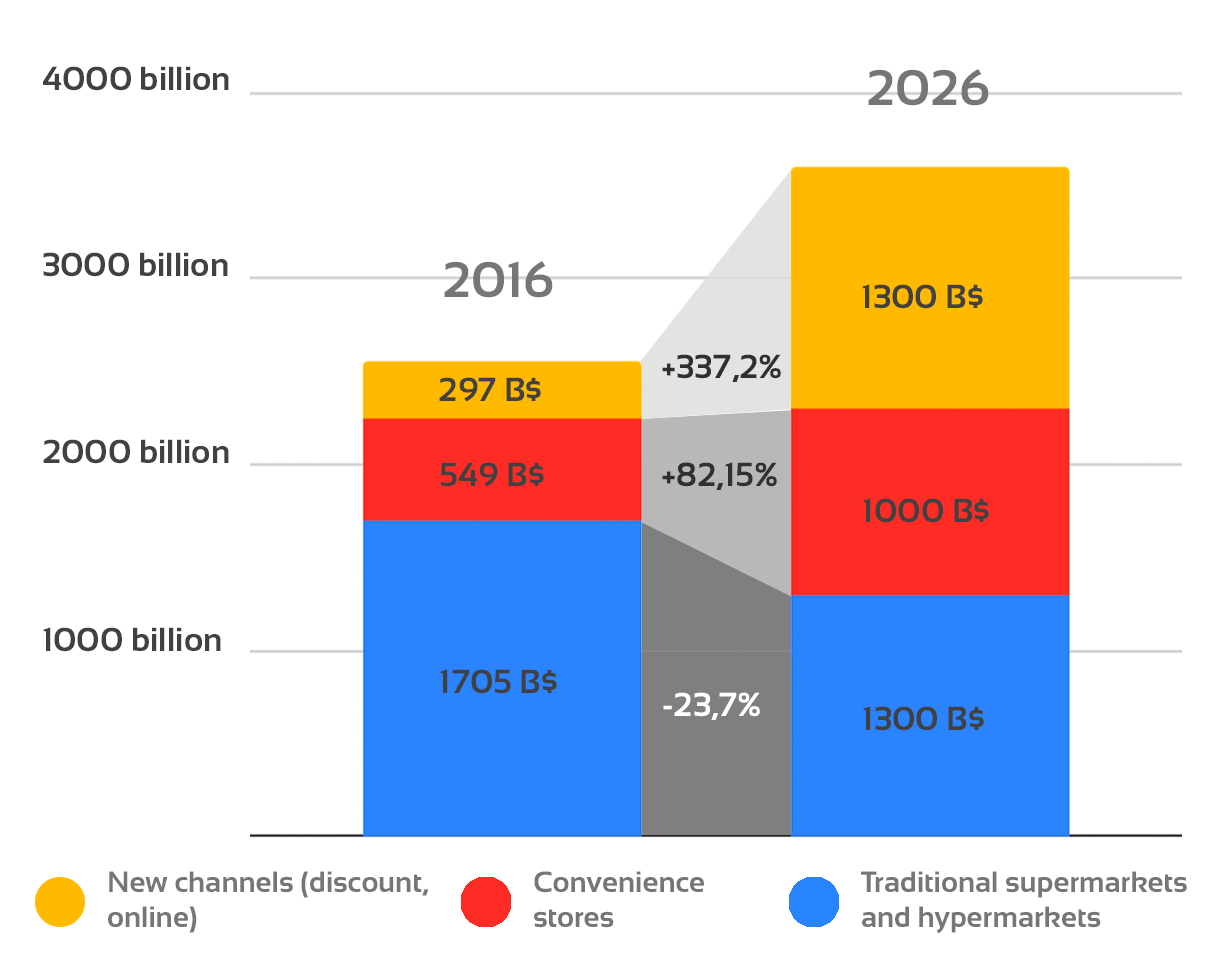Hannes Heikinheimo
Sep 19, 2023
1 min read

Speechly has published a white paper on improving user experience in grocery eCommerce. This blog post shares the key findings of the paper. You can download the white paper as a PDF at the bottom of this page.
Many grocery retailers in the Western world are facing stagnating growth of sales and falling prices. Total sales have grown only 2% yearly for the past decade and increasing competition from discount chains and increasing labor and commodity costs has contributed to evaporation of over half of the combined profit of publicly traded grocery retailers between 2012 and 2017.
 CHART: Economic value add of publicly traded grocery retailers, billions USD. (Source: McKinsey)
CHART: Economic value add of publicly traded grocery retailers, billions USD. (Source: McKinsey)
According to eMarketerer, online foods and beverages are the fastest growing ecommerce product category in the Europe with almost 20% growth. The COVID-19 pandemic has only increased the pace of growth with many retailers reporting three figure growth rates.
Still the same research estimates that groceries will be among the least penetrated markets for the years to come. UK, France, South Korea, Japan and China are a bit more developed, but the share of eCommerce is still nowhere bigger than 10% of total sales.
 CHART: Traditional supermarkets are losing market share to new channels
CHART: Traditional supermarkets are losing market share to new channels
In this paper we will argue that the biggest reason for retail ecommerce having not grown faster is bad customer experience especially in shopping cart creation phase. The most efficient way to improve customer experience in cart building is voice technology.
Not many millenials would even consider buying flight tickets from a brick-and-mortar store. Still they do their grocery shopping pretty much just like their grandparents did. Almost half of all Britons have never bought groceries online. There are three major reasons why consumers prefer offline experience over online in groceries.
Delivery costs; average cost for collecting the items and delivery per basket is around 8-13 EUR. Usually about 80% of this cost is transferred to the customer.
For example Amazon spends a whopping 25% of it’s total revenue on shipping and fulfillment costs.
Lack of trust; consumers are accustomed to selecting the freshest foods themselves. They don’t necessarily trust collectors to do that for them. Same goes with replacement products; while the customer is perfectly okay if their 1,5 litres of Coca-Cola is replaced with 1 litre of Coca-Cola, they might not be okay with it being replaced by Pepsi of any amount.
Bad user experience; a typical supermarket has about 30.000 to 50.000 SKUs. While customers might enjoy browsing through dozens of red dresses before purchase decision that’s usually not the case with milk or other low-value products. The current customer experience in creating a grocery shopping cart is cumbersome and requires a lot of scrolling and clicking through.
In fact, 85% of online grocery shoppers use the same store they used the first time because it’s a lot easier to modify previous orders than to start from scratch.
Voice is a great addition to grocery eCommerce experience, as purchasers know the products they are looking for and don't need to search and browse.
Voice is a natural addition to grocery eCommerce shopping cart creation

Walmart is collaborating with Tasty, a Buzzfeed spinoff that makes recipes and cooking videos. Users of Tasty iPhone app can find over 4000 recipes and filter them by ingredients, dietary needs or difficulty. The app has over 300.000 reviews with an average rating of 4.9 and is among the top 20 of all food apps on the App Store.
Now, with the Walmart collaboration users can also add the ingredients of all Tasty recipes to Walmart shopping cart and either do in-store pickup or have them delivered home.
Sumaiya Balbale, the vice president of e-commerce, mobile, and digital marketing of Walmart said that while ”consumers today are shopping very differently”, Walmart wants to find new ways to get its products in front of shoppers.
Tasty has almost 100 million Facebook followers and over 60 million viewers for its recipe videos, who can now conveniently fulfill their grocery needs from 2200 Walmart stores right after being inspired by a cooking video.
This is the end of the preview of our white paper. Download the white paper and get access to conclusions and other data points!
Learn how voice is changing the way people shop for groceries.
Speechly is a YC backed company building tools for speech recognition and natural language understanding. Speechly offers flexible deployment options (cloud, on-premise, and on-device), super accurate custom models for any domain, privacy and scalability for hundreds of thousands of hours of audio.
Hannes Heikinheimo
Sep 19, 2023
1 min read
Voice chat has become an expected feature in virtual reality (VR) experiences. However, there are important factors to consider when picking the best solution to power your experience. This post will compare the pros and cons of the 4 leading VR voice chat solutions to help you make the best selection possible for your game or social experience.
Matt Durgavich
Jul 06, 2023
5 min read
Speechly has recently received SOC 2 Type II certification. This certification demonstrates Speechly's unwavering commitment to maintaining robust security controls and protecting client data.
Markus Lång
Jun 01, 2023
1 min read